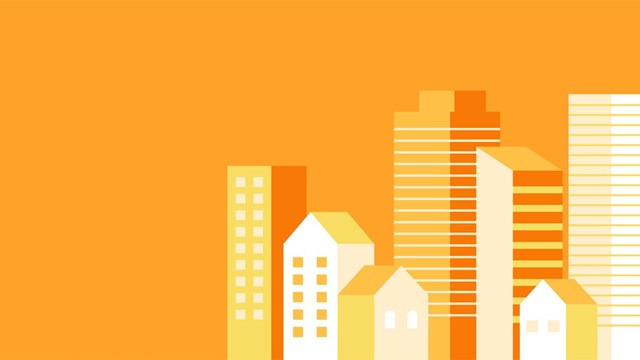Between 2011 and 2013, owners and managers of existing properties in New York City will start to feel the impact of two energy-related laws signed by Mayor Michael R. Bloomberg at the end of 2009. Many property professionals might still be unfamiliar with the new codes, introduced as part of the Mayor’s “Greener, Greater Buildings Plan.”
• Local Law 84 of 2009 mandates annual energy benchmarking, starting in 2011.
• Local Law 87 of 2009 mandates energy auditing and retro-commissioning every 10 years, starting in 2013. Buildings will report according to tax block number, so that only about 10% of “covered buildings” file each year.
Properties subject to the requirements of these laws include:
1) buildings over 50,000 square feet in area;
2) two or more buildings that have the same owner, together exceed 100,000 square feet and are on the same tax lot; and
3) two or more buildings under the same condo board that together exceed 100,000 square feet, regardless of their relative location.
Following is a quick primer on what benchmarking, energy auditing and retro-commissioning mean, and what owners and managers need to do to comply with the laws.
Local Law 84—Benchmarking Requirement
An energy benchmark provides a snapshot of a building’s energy performance over a given period of time. A property profile and historical utility billing information are entered into a software tool, which generates a report analyzing the building’s energy use, and comparing it to that of similar properties in the tool’s database.
Under Local Law 84, all covered buildings are required to submit an annual benchmarking report to the Department of Finance, starting in 2011. Due no later than May 1 each year, the report will cover energy usage for the preceding calendar year. It will look at the entire building: common areas, residential tenant spaces and any commercial spaces. The law specifies that billing information must be requested from separately-metered commercial tenants. While no such specification is made for separately-metered residential tenants, usage information on these tenants is in fact required; building owners or managers who don’t want to ask their tenants for this information should request an aggregated bill for the building from utilities.
New York City has specified the use of Energy Star’s Portfolio Manager, an online benchmarking tool developed by the US EPA. Users enter a property profile, along with complete utility billing information. Portfolio Manager calculates how much energy the building is using overall and, based on that measurement, ranks the building on a scale of 1-100, relative to other buildings in its database. The 1-100 ranking is available only for commercial buildings at this time; residential buildings will receive a value for overall energy use in kBTU per square foot.
Once Portfolio Manager has generated a report for the building, the user will upload that report to the NYC Department of Finance, via a direct link being developed by the city.
For those interested in understanding their buildings’ energy use beyond the city’s basic requirements, there are other, more sophisticated benchmarking tools than Portfolio Manager available. These tools can offer a variety of indices of energy use, rank buildings, and even indicate which major end-uses— such as seasonal heating and cooling, and non-seasonal baseloads—are using energy efficiently and which aren’t. Such tools provide the user with the extra information to identify energy and money saving opportunities.
Local Law 87—Auditing and Retrocommissioning Requirement
An energy audit sets out to identify cost-effective system improvements and operational changes that will save energy—and money—at a property. Qualified auditors visit the building to assess all the energy-related systems, including heating and cooling, lighting, air distribution and ventilation, hot water systems and the building envelope; they also consult with maintenance personnel and residents for feedback on potential issues. The auditors then generate a report analyzing the findings of the site survey, and recommending energy efficiency measures for the property. Information on incentives available to help pay for the measures is generally also included.
Retrocommissioning is a process of optimizing the performance of building systems by correcting deficiencies. Where retrofitting might require e.g. replacing a boiler or HVAC unit, retrocommissioning involves making sure that the existing equipment is performing to specification; this may require tuning controls, cleaning filters, or making appropriate repairs, relatively simple measures that can be very effective in saving energy.
Under Local Law 87, covered buildings will periodically be required to undergo an energy audit, followed by a retrocommissioning process, and submit reports on both in years corresponding to the last digit of their tax block number: e.g., buildings with tax block numbers ending in “4” will be required to report in 2014, 2024, and so on. This requirement begins in 2013, so the first group of buildings to report will be those with tax blocks ending in “3”.
The city has also created an “early reporting option”, under which ANY building may be reported in 2013, regardless of their tax block number; these buildings will then not be due to report again until their second originally-assigned reporting year.
To comply with the law, building owners must have an energy audit conducted by an approved auditor. Then, based on the audit report, an “approved retrocommissioning agent” (DOB-approved) will implement the retrocommissioning measures, and provide the owner with an appropriately certified report. Both documents must then be submitted to the Department of Buildings between January 1st and December 31st of the reporting year.
Audits and retrocommissioning may be done in advance, as long as each takes place no more than 4 years before the reporting is submitted; the retrocommissioning process must follow and be based on the audit.
For further information:
The complete legislation can be found on the Department of Buildings website, at www.nyc.gov/html/dob/ html/reference/recent_code.shtml.
Phil Vos is with the Manhattan-based energy efficiency company Bright Power.










Leave a Comment